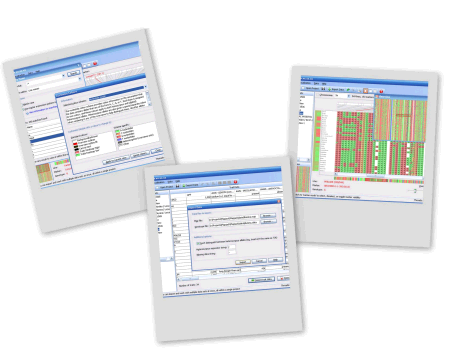Flapjack
Flapjack is a multi-platform application providing interactive visualizations of high-throughput genotype data, allowing for rapid navigation and comparisons between lines, markers and chromosomes.

Visit the download page to get the latest version of Flapjack (1.22.04.21; 21st April 2022).
You can get a full list of recent new additions, changes or bug fixes by reading through the release notes.
Please cite: Milne I, Shaw P, Stephen G, Bayer M, Cardle L, Thomas WTB, Flavell AJ and Marshall D. 2010. Flapjack – graphical genotype visualization. Bioinformatics 26(24), 3133-3134.
In more detail
New software tools for graphical genotyping and haplotype visualization are required that can routinely handle the large data volumes generated by high throughput SNP and comparable genotyping technologies. Flapjack is a new visualization tool to facilitate analysis of these data types. Its visualizations are rendered in real-time allowing for rapid navigation and comparisons between lines, markers and chromosomes.
Based on the input of map, genotype and trait data Flapjack is able to provide a number of alternative graphical genotype views with individual alleles coloured by state, frequency or similarity to a given standard line. Flapjack supports a range of interactions with the data, including graphically moving lines or markers around the display, insertions or deletions of data, and sorting or clustering of lines by either genotype similarity to other lines, or by trait scores. Any map based information such as QTL positions can be aligned against graphical genotypes to identify associated haplotypes. Flapjack also allows for analysis methods to run over the data, such as calculating similarity matrices, running PCoA calculations, or the generation of statistics to help with marker assisted back crossing or pedigree verification of F1s.
All results are saved in a Flapjack project format file and can also be exported as raw data or graphically as image files. We have devised efficient data storage structures that provide high-speed access to any subset of the data, resulting in fast visualization regardless of the size of the data.
